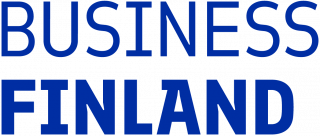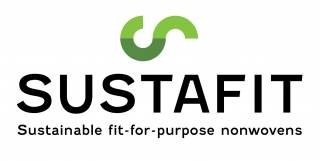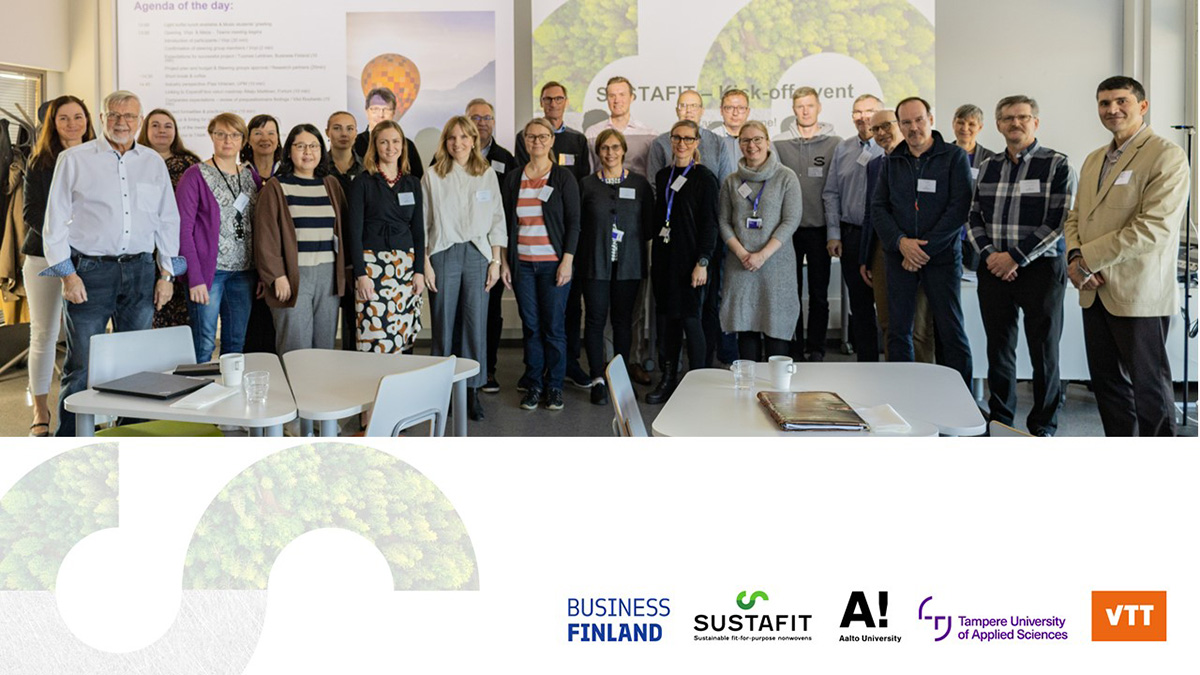Project Manager and Senior Lecturer Virpi Rämö from leading partner TAMK thanked all the scientific and industrial partners who were involved in the application.
“It has taken us all a lot of effort but now we are in action. We are super excited! Special thanks to Business Finland for funding this important project”, Rämö stated.
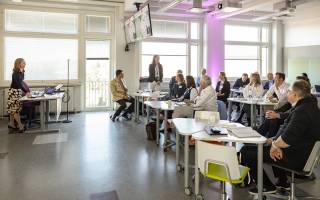
She emphasized that the richness of the project is not only due to very competent research partners but also the wide range of participating companies.
“The industry partners are helping us to go into the right and concrete direction. We are very happy to have UPM, Fortum, SharpCell, Kemira, Fiber-X, Spinnova, Lixea, Valmet, Nordic Bioproducts Group, Rester, Sulzer, Anpap, NordShield, Lounais-Suomen jätehuolto, Paptic and JedX Medcare on board with us on this journey”, Rämö outlined.
Rämö also welcomed Senior Lecturer Marja Rissanen to the team. Rissanen recently started as Head of Bachelor Degree Program for Textile and Material Engineering at TAMK.
“We definitely need students, new knowledge and talent in this field”, Rissanen said.
SUSTAFIT project has several ambitious goals
The project will support companies to develop sustainable nonwovens, fibres and webs. Nonwoven industry has a variety of application areas which can be seen also in the diversity of project work packages.
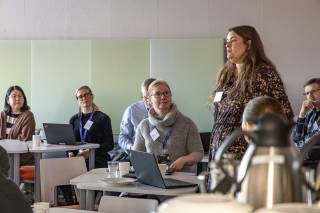
“It is indispensable for the industry to gain advantage of segment-wise sustainability strategies for nonwovens. Therefore, we will start by describing those. It is also important to broaden the feedstock portfolio for sustainable nonwovens and gain better understanding of nonwoven raw materials, processing and products”, Rämö described.
To support the industry in a concrete way, the SUSTAFIT project will develop water-repellent and antimicrobial, bio-based nonwovens.
“As an essential part we will identify the business opportunities for sustainable and fit-for-purpose nonwovens. This will be made in a collaboration with stakeholders in the value chain broadly, with the aim to increase international collaboration and effectively disseminate the outcomes.”
“There is a need for neutral, public research in this area”
The project is funded by Business Finland, research companies and industry partners. Tuomas Lehtinen, Business Finland’s Ecosystem Lead, underlined that in companies there is a need for neutral, public research in this area.
“Collaboration between research organizations and companies is important. In this project, there is a novelty aspect and a global market opportunity. Additionally, companies are very committed, and the project supports textile area, which is quite strong in Finland. We hope that there will be a competitive edge for them out of the project results”, Lehtinen said.
Research partners have a leading role
The segment-wise sustainability strategies formulation is led by VTT. The research company will also form and consolidate nonwoven webs and create novel concepts and structures to improve performance. VTT will lead the international collaboration of the project.
TAMK leads the research of sustainable business models and value chains for nonwovens. TAMK will also study the raw material and end of life options of sustainable nonwovens. TAMK is responsible for the coordination of the project.
Aalto University will bring its expertise in producing man-made cellulose fibers (MMCFs) from different raw materials, adding functional properties (e.g., hydrophobization and antimicrobial) on fibers and nonwovens, recycling functionalized textiles into new MMCFs, and exploiting the results.
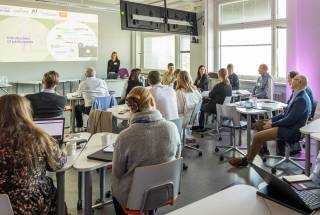
Gathering more experience of nonwoven product end applications and testing
Research Manager Pasi Virtanen from UPM Pulp Research and Innovations highlighted the evident need for further nonwoven studies, research, application tests and technology development in order to increase usage of wood fibre-based materials.
Virtanen stated that we have to comply with global megatrends and provide non-fossil alternatives in nonwoven industry. High environmental performance is needed also due to consumer preferences and e.g. EU directives.
“Currently most nonwovens contain fossil-based polymers as durability is required for several product types. However, there are many applications where wood fibres can be used to reduce the environmental burden”, said Virtanen.
There is also room for improving technical understanding of the existing production technologies, laboratories and testing methods as well as supporting raw material and machinery suppliers’ product developments in Finland.
ExpandFibre aims to meet the growing demands for sustainable textile fibres
Technology Expert Maiju Miettinen from Fortum presented ExpandFibre 50 M€ research and development program and ecosystem launched by Fortum and Metsä Group. The development program and ecosystem, funded by Business Finland, is accelerating the development of sustainable bioproducts.
“ExpandFibre focuses on upgrading pulp fibre, hemicellulose and lignin from renewable and sustainable sources of straw and northern wood into new bioproducts. It aims at producing new ground-breaking technologies and smart business concepts. We invite all actors in relevant value chains to join in building this ecosystem”, Miettinen summarized and officially invited SUSTAFIT project to join the consortium.
“Increasing sustainability in nonwovens will add value to the business”
At the end of the kick off, Viivi Rouhento, thesis worker at TAMK, presented a survey which has been conducted to support the start of the project. Her thesis is related to sustainable business models for nonwovens.
According to survey, increasing sustainability in nonwovens will add value to the business. The respondents see different types of potential enablers, but also big challenges, especially relating to missing legislation, raw material prices, and cost of final products.
SUSTAFIT journey towards sustainable nonwoven products has started – stay tuned!
Text: Hanna Ylli
Photos: Sami Mikkonen

